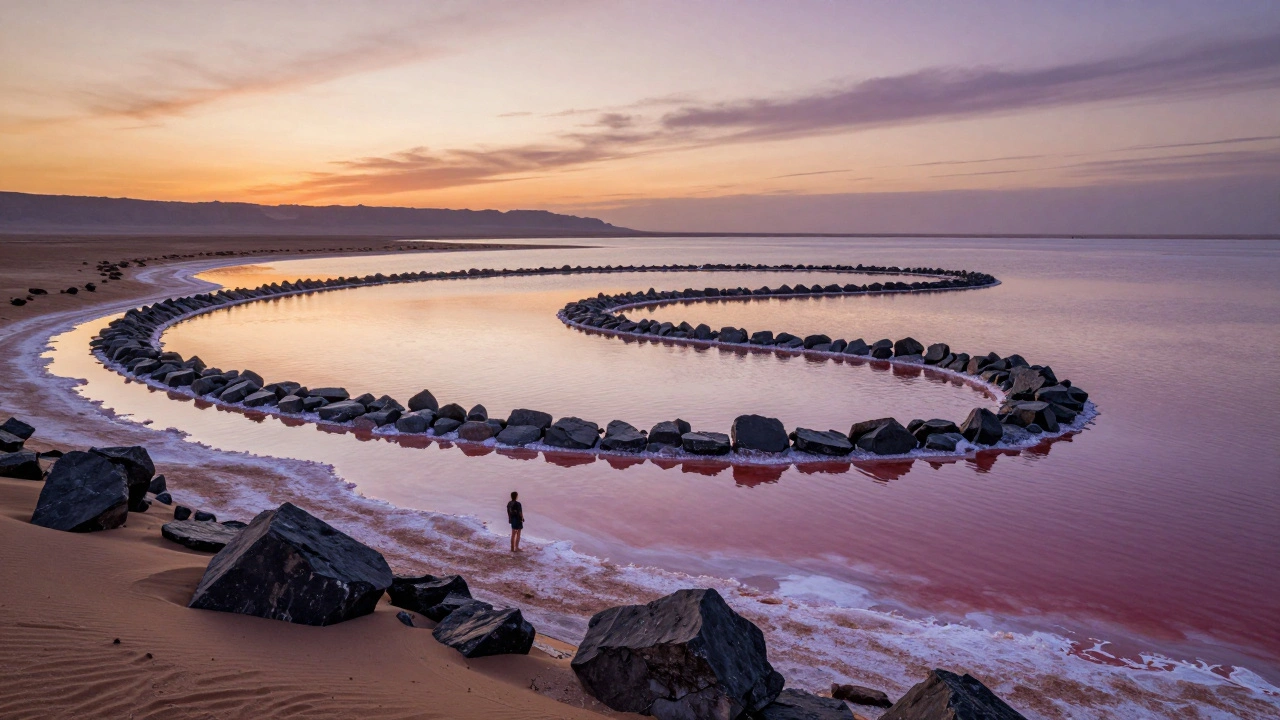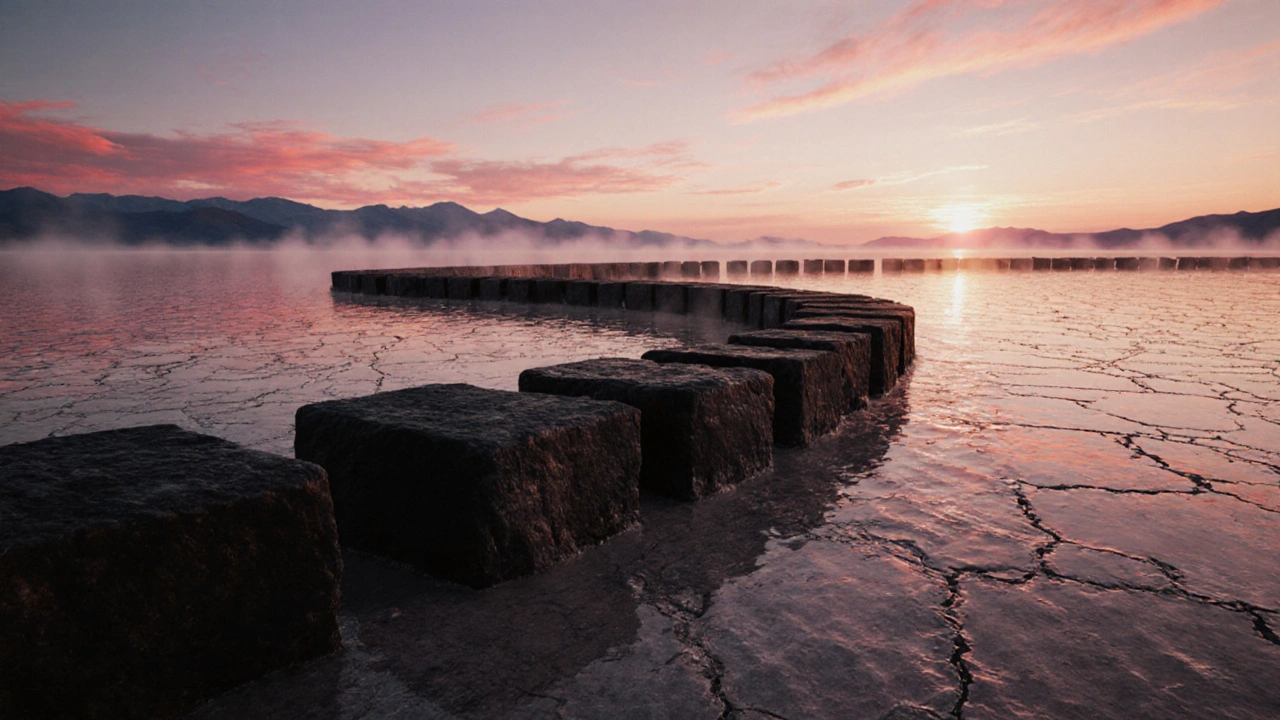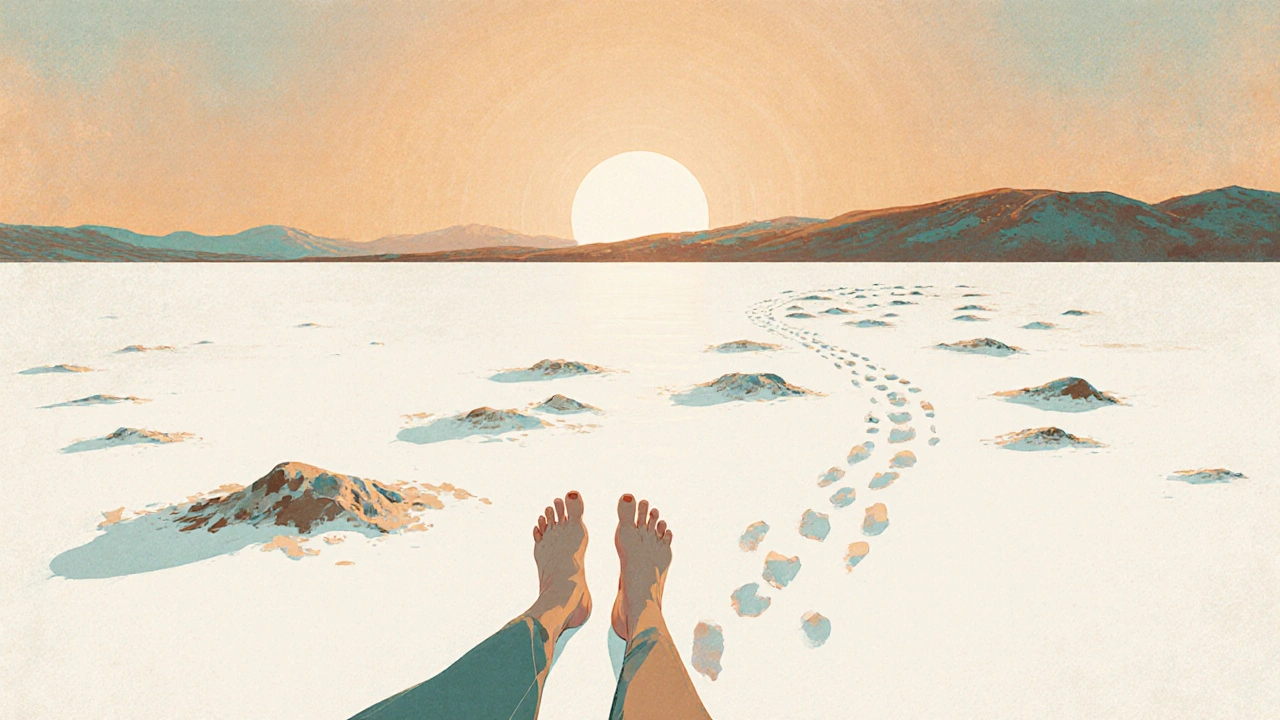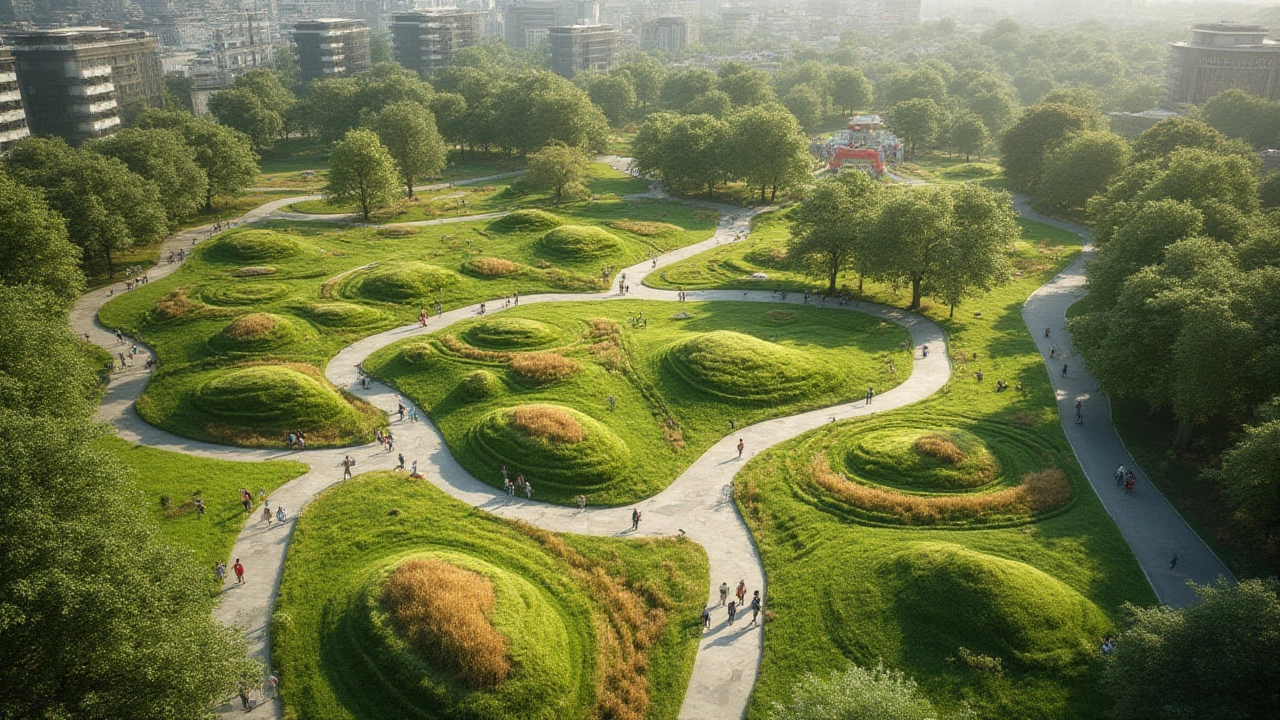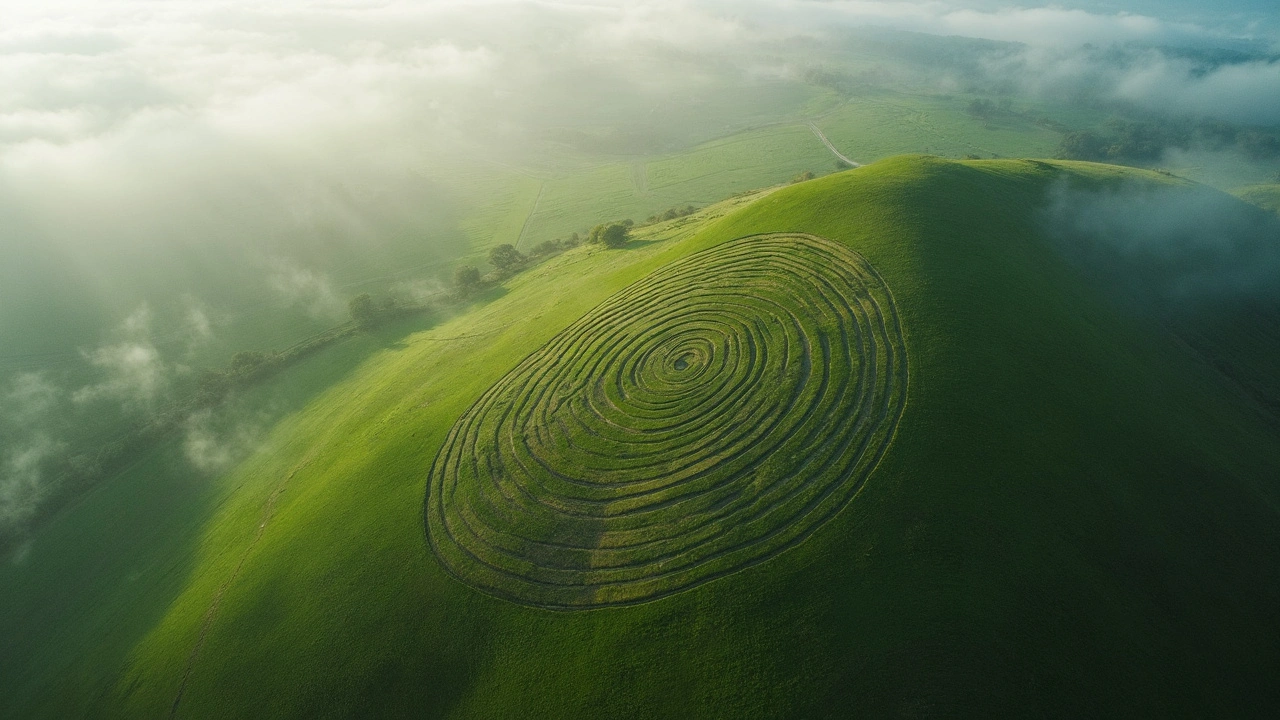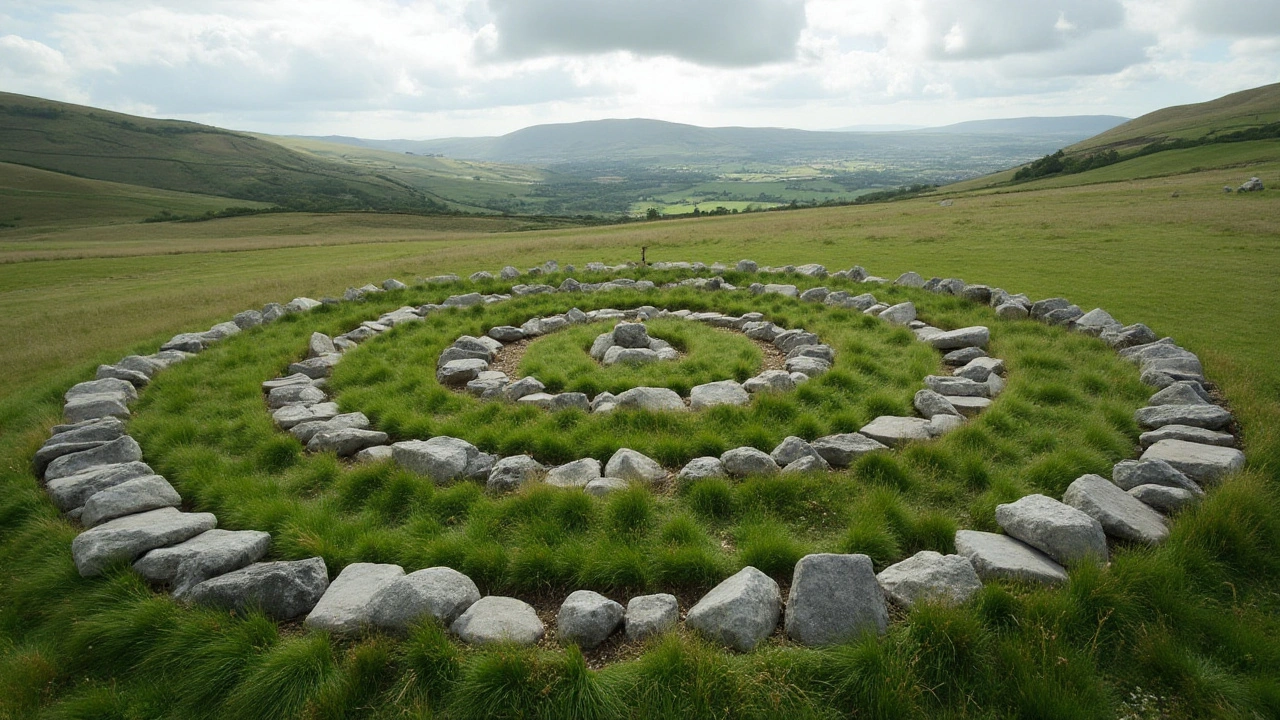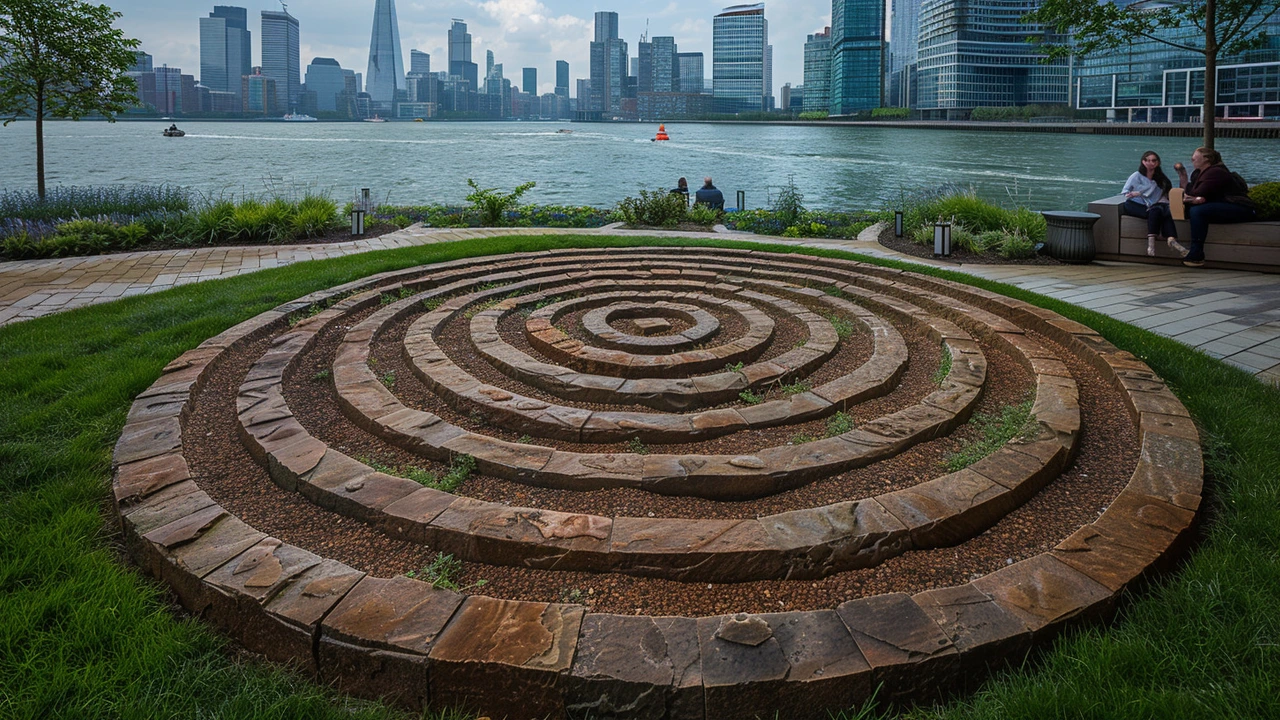Land Art: How Earth, Scale, and Design Meet
Land art uses the ground, rocks, plants, and water as its palette. It’s about making work that lives in nature—often huge, sometimes temporary, and always tied to place. You don't need a museum to experience it; you can stand inside it, walk around it, or watch it change with weather and seasons.
Why does land art matter today? Because it shifts focus from object to experience. Instead of buying a painting, people move through shape, texture, and time. This makes land art a natural fit for public spaces and urban design: parks, plazas, and greenways borrow its scale and site-specific thinking to make cities feel rooted and human.
Real examples and where to find them
Big names like Robert Smithson’s Spiral Jetty or Andy Goldsworthy’s natural sculptures show two paths: monumental intervention and delicate, temporary works. Contemporary projects often blend art with ecology—wetland restorations, pollinator gardens, and pathways that double as sculptural lines. On Paul Artistry you’ll find stories that connect land art to city planning and installation practices, so you can see how artists and designers borrow the same playbook.
How land art shapes urban design
City planners use land-art ideas to soften concrete jungles. Think slopes that become seating, rain gardens that become sculptural basins, or bike paths that trace a pattern across a neighborhood. Land-art thinking brings practical benefits: better drainage, local habitat, shade, and places where people naturally gather. When design respects the site, maintenance and community care become part of the work.
Want to try land art yourself? Start small and local. Pick a safe, legal spot—your backyard, a community garden, or a permitted public area. Use found materials: stones, sticks, leaves, or driftwood. Sketch a simple plan, place elements with intention, then step back and watch how light and weather alter the composition. If your piece is temporary, photograph it as part of the work.
Materials and impact matter. Choose natural, non-toxic materials and avoid disturbing wildlife or protected plants. Larger projects need soil testing, erosion control, and possibly permits. Reach out to local land trusts, parks departments, or community groups; they often welcome creative collaborations that bring art and ecology together.
Look for workshops, artist collectives, and conservation groups—these provide hands-on techniques, help with permits, and connect you to volunteers for building and long-term care in your neighborhood, year-round.
Preservation and legality are real issues. Some land art is meant to vanish, others to last. When an artwork sits on public land, check rules about public art, conservation zones, and cultural sites. For private land, clear written permission protects you and your work. Always consider the long-term care: who will maintain the piece, and what happens after a season or a storm?
Land art changes how you see place. It teaches you to notice slope, soil, and sunlight. Whether you visit a monumental earthwork or make a pebble pattern on the riverbank, you’re taking part in a tradition that mixes art, landscape, and everyday life.

